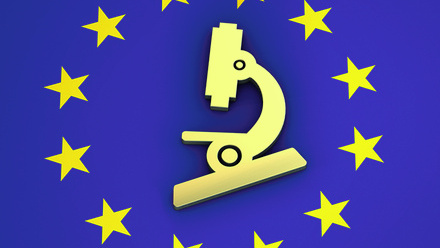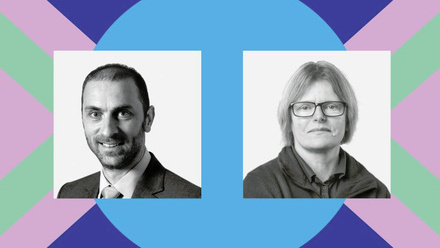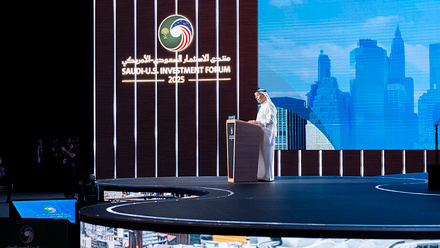Q&A with Elena Rodríguez Falcón from NMITE
In any industry, successful management often means good communication and meeting your employees’ needs - Professor Elena Rodríguez Falcón discusses leadership, what soft skills make a good leader and how to approach the task.

We must tap people on the shoulder and encourage them to think of themselves as future leaders
Professor Elena Rodríguez Falcón is President and CEO at the New Model Institute for Technology and Engineering (NMITE). Currently, Elena is starting up a new higher education institution (HEI), we ask her how she manages people during this initial process.
What does your daily job entail?
No one day is the same at a start-up organisation, particularly one that aims to create a future HEI, which challenges conventional educational practices. One day is all about infrastructure, another is all about the quality assurance of the programme we are developing and the next about politics. So, in an environment like this and at this stage in the development of NMITE, my job is a combination of visioning, leading, managing and keeping everyone inspired and engaged in what is a very exciting but complex project.
How did you become the President and Chief Executive of NMITE?
I joined NMITE in February 2018 as Provost and Chief Academic Officer. By the end of May of the same year, I was asked to take on the role of acting CEO due to the sudden departure of the inaugural president. The following months were a huge and rapid learning curve as I was not only leading a very nascent organisation without much to benchmark against, I was also doing it unexpectedly and under difficult circumstances.
Nevertheless, I like a challenge and had already put all of my eggs into this particular basket, having left my job of 20 years to join NMITE, and I truly wanted it to succeed. By November, I was formally offered the job of President and Chief Executive, which is quite reassuring as it confirmed I had demonstrated that I could do the job.
Can you tell me more about NMITE and its aim?
NMITE is working towards becoming a new provider of higher education in Hereford. Engineering and teaching-focused, it will enable future aspiring engineers to learn by undertaking real-world engineering and technical projects provided by employers and community groups. NMITE hopes to be a disruptive game-changer in every facet of its operations and programmes. Supported by government, industry and the profession, our first intake will join us as soon as we have completed the validation process.
We recognise that future engineers need technical knowledge, but also that creativity, problem-solving ability, and understanding of humanities, arts, business and many other areas are all required to succeed, as well as the ability to use these skills in current and future professional contexts. For these reasons, our planned programmes will be open to all with the creativity, imagination and the determination to solve society’s challenges, not just those with A-Level maths and physics. The learning experience will be studio-based, problem-led, and deeply connected to industrial and community partners.
Please, describe your leadership style
Recently, a member of the NMITE team, Samantha Lewis, had an assignment on leadership for her MBA and decided to do it on my leadership style. She concluded:
- Big decisions – I use a democratic leadership, where all big decisions are made once all employees have had the opportunity to discuss
- Daily operations – laissez-faire leadership. Employees are autonomous and accountable for the operations within their areas. The CEO does not interfere, as long as the business goals are achieved
- Executive meeting – transformational leadership. CEO encourages continual improvement in individuals, teams and organisational as a whole, and
- One to one – coach style leadership. CEO meets with each key employee and offers coaching, identifies strengths and weaknesses, and supports individual and team growth.
She added that I know what style to use and when to get the most out of the team. I must admit that I do not purposely use these styles, but I can see that I do, and it is instinctive rather than planned.
Why do you think that style works well?
If the above is true, I think it works well as I adapt according to the circumstances and the people. Inevitably, in a position of responsibility and accountability such as the one I hold, there are occasions when I have to make the final decision. However, I will make the best-informed decision and hopefully it will reflect the organisation’s needs, values and culture.
Every day there is a new challenge and often I have to think more than twice or thrice before I know the best course of action. I am okay with that.
How is it managing people during a start-up phase?
It has advantages as you get to know people quite well and tailor the management and leadership accordingly. Teams can grow and develop together, and the culture develops as the organisation grows.
However, the demands of a start-up organisation are very intense and often unpredictable, which can cause considerable stress, and tensions can arise. Managing people under these circumstances, in my experience, requires a lot of empathy, compassion and the more structure we can put in place to enable systematic approaches the less volatile it will be.
What are the main soft skills that make you a good leader?
I actively listen to people and I am genuinely interested in what they have to say, in who they are and what makes them tick. I care about people’s wellbeing and try to empathise with their circumstances. I would like to think that I treat people the way I would like to be treated, with respect, kindness and professionalism. Above all, I am grateful, and I actively thank and celebrate people’s contributions and achievements, however big or small.
How do you think the STEM industries should improve the gender balance in leadership positions?
Incredibly capable professionals of whatever gender are out there. We need to find them and actively headhunt them and encourage them to apply to leadership positions. We must not take a passive attitude and expect them to come.
Equally, we must not assume that internal candidates who are capable or ready to lead will have the awareness or confidence to apply for leadership roles.
We must tap people on the shoulder and encourage them to think of themselves as future leaders, and organisations must put in place the mechanisms, platforms and culture for those people to grow into those leaders.
And why is that balance important?
If 50% of the world is women, 50% of STEM leaders should be women. If your teams top to bottom represent the society they live in, their decisions, solutions and approaches will be more suitable for the world we inhabit. That goes way beyond gender though and we must not forget any minority group. Diversity breeds creativity. Creativity leads to innovation. Innovation helps solve problems. We have far too many problems and not enough ideas to address them. Do we need any other argument?
Elena’s take on leadership:
1. Ask how people are on a daily basis and thank them for
what they have done.
2. Encourage a safe-to-fail environment where people are
not afraid of making mistakes.
3. Find out what makes people tick and help them grow.
Your ultimate goal should be to have developed your
own replacement.







